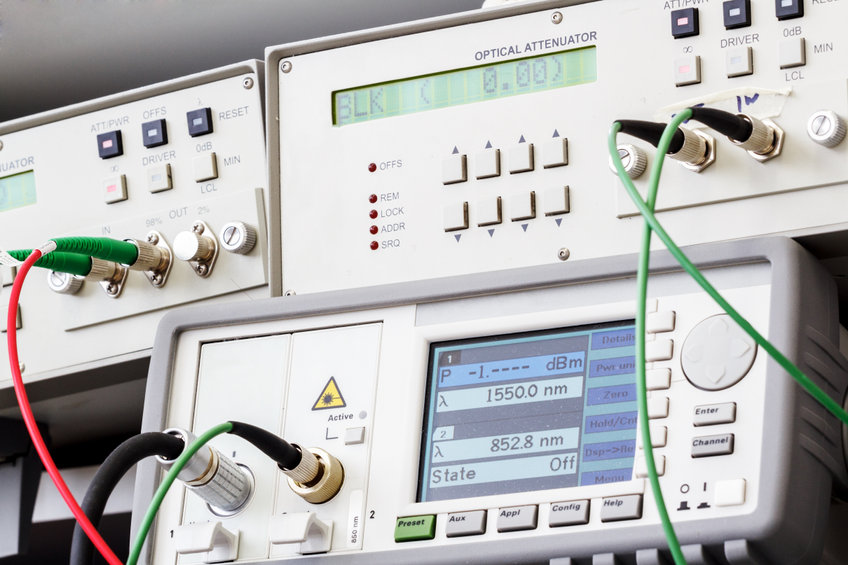Optical fibre testing equipment maintains reliability in fibre network installations.
Revealing the Secret Use Optical Fibre Evaluating for Efficient Data Transmission
In the world of modern-day communication, optical fiber testing arises as a vital technique for optimizing data transmission. By using methodologies such as Optical Time Domain Name Reflectometry (OTDR) and insertion loss assessments, network drivers can effectively identify and attend to concerns that might compromise signal stability. As the demand for faster and more trustworthy connections continues to increase, the implications of these screening methods expand beyond immediate fault detection, influencing long-lasting network performance. Understanding the multifaceted applications of optical fiber screening welcomes a deeper exploration into its pivotal duty fit the future of information interaction.

Value of Optical Fibre Testing
The importance of optical fiber screening can not be overemphasized, as it functions as an essential part in ensuring the reliability and effectiveness of information transmission systems. In an era where high-speed communication is extremely important, any shortages in fiber optics can bring about significant data loss and minimized efficiency. Extensive screening procedures are necessary to confirm the integrity and efficiency of optical cable televisions.
Testing permits the identification of problems such as micro-bends, macrobends, and splice losses that might impede signal high quality. It gives understandings right into the general attenuation and data transfer abilities of the fibre, guaranteeing that the network satisfies particular operational standards. Routine testing not only improves system performance yet also prolongs the life expectancy of the framework by recognizing potential issues before they intensify into pricey failures.

Types of Optical Fibre Examinations
Different kinds of optical fibre tests are performed to guarantee the efficiency and dependability of fiber optic networks. These examinations can be classified into numerous key kinds, each serving a details purpose in assessing the stability of the fiber.
First, Optical Time Domain Reflectometry (OTDR) is a noticeable test that recognizes faults, interlaces, and ports within the fiber. By sending pulses of light and assessing the reflected signals, professionals can pinpoint concerns along the fibre's size.
Second, insertion loss examinations evaluate the quantity of signal loss when light passes through ports or splices, which is vital for preserving network efficiency.
Third, return loss examinations measure the amount of light mirrored back in the direction of the resource, offering understandings right into the quality of connections and potential resources of interference.
Furthermore, continuity examinations guarantee that the fiber course is total, allowing technicians to verify that the fiber is undamaged with no breaks. robotic vision.
Lastly, aesthetic fault locators make use of noticeable light to recognize breaks or extreme bends in the fiber, helping in quick troubleshooting. Collectively, these examinations develop a thorough strategy to maintaining optimal performance in fibre optic networks.

Applications in Network Upkeep
In modern-day telecoms, effective network maintenance depends heavily on optical fiber testing to determine and remedy concerns without delay. Normal screening makes certain that the network runs at optimum performance levels, decreasing downtime and improving individual experience.
Among the primary applications of optical fibre testing in upkeep is the detection of mistakes, such as breaks, bends, or incorrect connections. Techniques like Optical Time Domain Name Reflectometry (OTDR) enable service technicians to find these concerns accurately and evaluate the quality of the fiber link. Furthermore, loss testing validates the honesty of the optical course, making official website sure that signal depletion stays within acceptable limits.
Regular upkeep testing additionally helps in safety nets, determining potential problems prior to they intensify right into substantial failures. This proactive strategy can conserve companies both time and funds. Throughout upgrades or expansions, optical fibre screening ensures that brand-new installations integrate flawlessly with existing facilities.
Enhancing Data Transmission Reliability
Reliable network upkeep through optical fiber screening not just addresses immediate problems yet also plays a considerable function in boosting data transmission reliability. By determining mistakes, gauging signal loss, and evaluating the general problem of fiber optic cables, testing makes sure that possible problems are rectified before they intensify into considerable disturbances.
Normal optical fiber screening, such as time-domain reflectometry (TDR) and optical time-domain reflectometry (OTDR), allows specialists to determine the specific areas of breaks, bends, or connector issues within dig this the network. This proactive method not only lessens downtime yet additionally maximizes the efficiency of information transmission by ensuring that the pathways for signals are clear and working effectively.
Additionally, screening help in validating adherence to sector requirements and requirements, which is essential for preserving the honesty of information flow. By ensuring that each connection meets needed thresholds for loss and quality, organizations can bolster their confidence in the reliability of their data networks.
Inevitably, spending in comprehensive optical fibre testing not just improves data transmission reliability however additionally sustains the long-lasting operational performance of interaction frameworks.
Future Fads in Fibre Screening
Arising innovations are poised to change fiber testing, leading the way for enhanced efficiency and accuracy in information transmission diagnostics (ofda). As the need for faster internet and greater data transfer proceeds to increase, the integration of innovative tools such as artificial intelligence (AI) and artificial intelligence (ML) is established to transform traditional fiber screening techniques. These modern technologies will make it possible for predictive upkeep and automated mistake detection, substantially decreasing downtime and boosting network dependability
Additionally, the fostering of Net of Full Article Things (IoT) devices will facilitate real-time monitoring of fiber networks, permitting immediate recognition of performance problems. This change towards positive management will decrease disruptions and enhance information flow.
Moreover, innovations in optical time-domain reflectometry (OTDR) and new screening standards will enhance the accuracy of measurements, making sure that information honesty is maintained throughout the transmission process. The arrival of 5G technology also requires the growth of more sophisticated fibre screening strategies to sustain its high-speed requirements.
Conclusion
To conclude, optical fiber screening is important for preserving effective information transmission within communication networks. By employing different screening strategies, such as OTDR and insertion loss tests, prospective faults can be determined and fixed, thereby improving signal quality and minimizing downtime. Regular testing not only makes certain conformity with industry standards but also helps with aggressive maintenance, eventually adding to the long-lasting reliability and performance of fiber optic systems. The ongoing advancement of screening methods will additionally boost these abilities in the future.